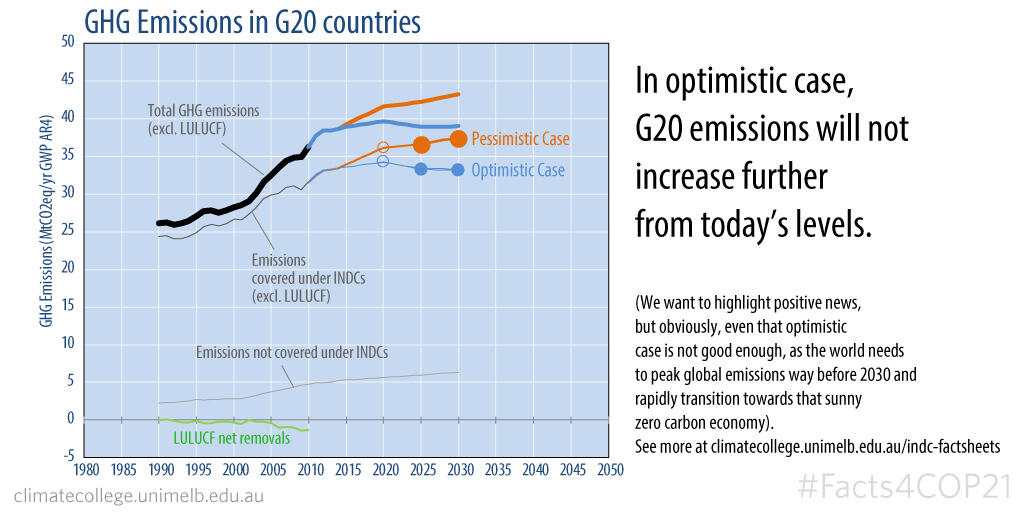Facts4COP21: The current 'optimistic' case shows a G20 emissions 'plateau'

As we start COP21 negotiations in Paris today, we wanted to provide a good news story.
Taking all G20 INDC targets, we calculated an emissions trajectory to 2030 for G20 countries.
In most cases an INDC does not provide a straight-forward target, but a range. This is either by design (such as for Australia where the announced target is 26% to 28% below 2005 levels) or because of unavoidable uncertainties in the calculations.
We chose the more ambitious end of every range and called this the 'optimistic case'. The least ambitious range we called the 'pessimistic case'.
Under the optimistic case, G20 emissions do not increase beyond today's levels. Instead, they seem to plateau. This is the good news.
However, we can't avoid pointing out that a plateau is not enough. Global emissions need to peak well before 2030 and start to seriously decline towards zero...and that's all global emissions, not just those of G20 countries.